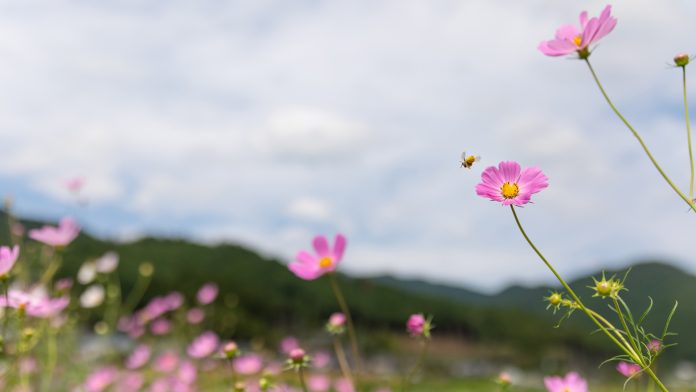Ecologists have analysed the effects of government initiatives to plant flowering fields to increase biodiversity around agricultural landscapes.
Over the last 30 years, attempts have been made to counteract biodiversity loss with agri-environmental schemes at various levels – from the national federal state to EU-wide programmes. One of the measures promoted in the schemes is the creation of flowering fields.
Professor Ingolf Steffan-Dewenter, the head of the Animal Ecology and Tropical Biology department at Julius-Maximilians-Universität Würzburg (JMU) in Bavaria, Germany, said: “However, it is currently not conclusively known whether and to what extent these habitats achieve the desired effect on biodiversity.” To test the success of these initiatives, Steffan-Dewenter launched a large-scale field study in 2016. The results have now been published in the scientific journal Proceedings of the National Academy of Sciences (PNAS).
The biologists investigated the species composition of different types of flowering fields in agricultural landscapes in northern Lower Franconia. As a benchmark, they used the semi-natural calcareous grasslands that can be found in this region. These usually protected flowering habitats are known for their high species diversity.
Fabian Bötzl, the lead author of the Würzburg study, said: “Our approach differs from previous scientific studies in this field in some essential respects.” First, there is the extent of the species groups considered: A total of 12 taxonomic groups were studied – including vascular plants, cicadas, bees, flies, butterflies, beetles, and birds. In three years of data collection in the field and about another year of laboratory analyses, the researchers identified almost 55,000 specimens that could be assigned to 3187 taxa.
Secondly, they included the temporal continuity of the diverse flowering fields. JMU professor Jochen Krauss, co-author of the study, said: “This means that we – unlike many previous studies – took into account the respective age of the flowering fields and their history of use.”
The results underpin that diversity increases in most taxonomic groups with the temporal continuity of the habitats. For example, there are only five to six species of grasshoppers on newly established flowering fields in the first year, which then increase over time to the approximately 15 species of the calcareous grasslands used as a reference.









